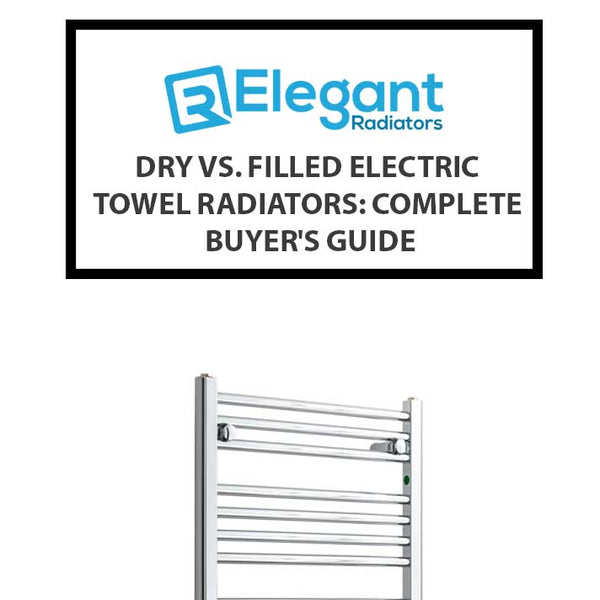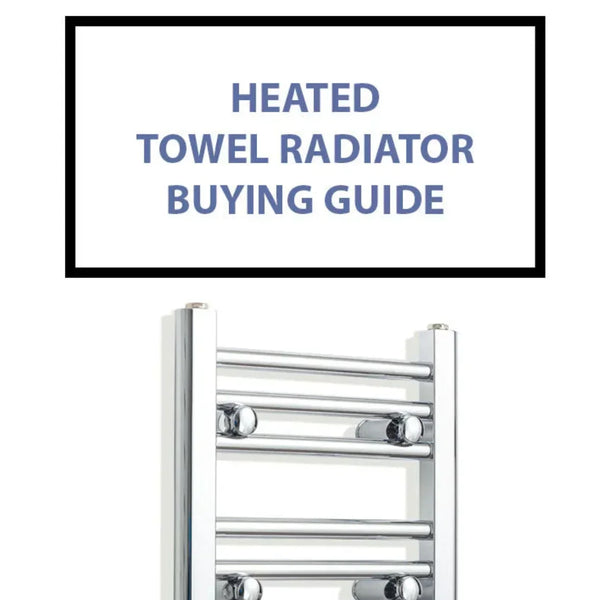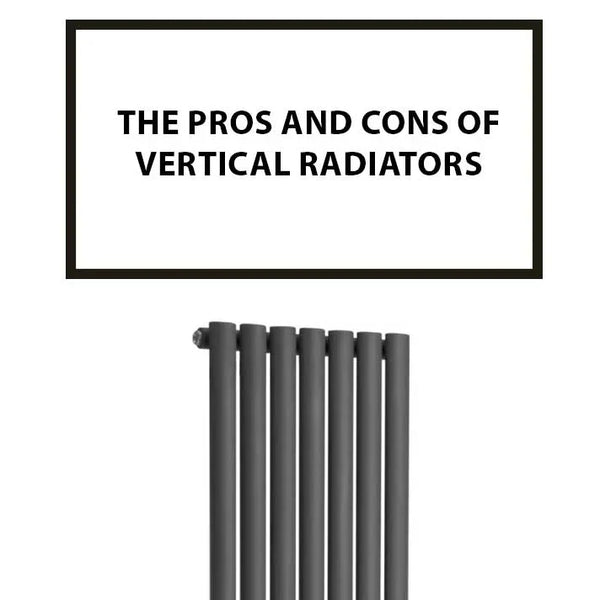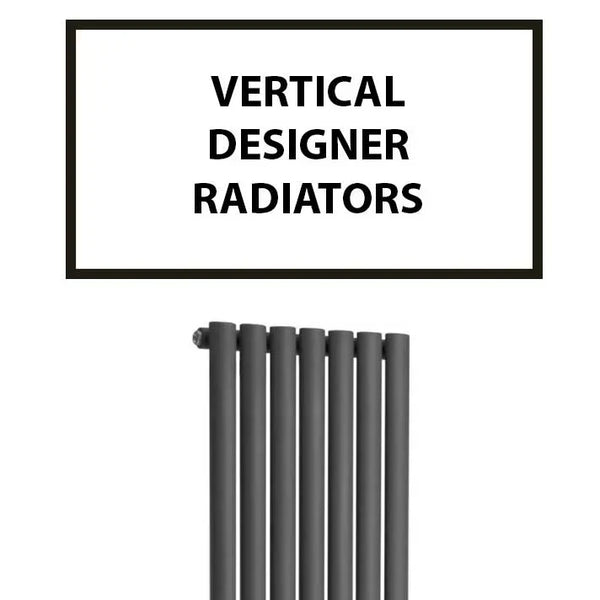Radiators Not Heating After Summer? Causes and Fixes

Radiators not heating up: Many homeowners question why their radiators aren't heating up adequately when the summer comes to a close and the weather becomes colder. This frequent problem can be upsetting and cause you to feel chilly and uneasy in your own house. We will examine the causes of this issue in-depth in this tutorial and provide you professional remedies to have your radiators operating at peak efficiency once more. So, if you've been wondering, "Why are my radiators not heating up after summer?" continue reading to get the information you require.
Understanding the Radiator System
It's crucial to comprehend the fundamentals of the radiator system's operation before delving into the possible causes of your radiators' failure to heat up. A central heating system's radiators are essential for transporting heat throughout your house. They function by warming the space by transmitting heat into the surrounding air from hot water or steam created by a boiler.
A radiator typically consists of pipes connected to a metal panel or column. Heat is transferred to the radiator through these pipes by hot water or steam. A cosy living space is created when the radiator emits heat into the space as it warms up. On the other hand, if your radiators are not heating up adequately, there may be an underlying problem that has to be fixed.
Common Reasons for Radiators Not Heating Up
Radiators that don't heat up efficiently after the summer have a few possible reasons. Through comprehension of these typical causes, you can diagnose the issue and implement the necessary solutions. Here are a few theories that could apply:
1. Air Trapped in the System
Air entrapment in the system is one of the most frequent causes of cold radiators. Air buildup in the radiators or pipes over time might make it difficult for the hot water or steam to circulate. The radiator doesn't heat up as a result. This problem is most prevalent after the summer when the heating system has been dormant for some time.
2. Closed or Partially Closed Valves
For radiators to control the amount of hot water flowing through them, valves must operate properly. The radiator's capacity to heat up is diminished if the valves are entirely or partially closed, which inhibits the flow of water. To ensure that heat transfer is maximised, make sure that all valves are fully open and unobstructed.
3. Buildup of Sludge and Debris
Sludge, rust, and other debris can build up in the heating system over time, particularly if the water is not treated or if routine maintenance is not performed on the system. This accumulation may obstruct the radiator fins or pipes, preventing the passage of hot water and decreasing heat output.
4. Imbalance in the System
If certain radiators in your house warm up while others stay cold, there can be a systemic imbalance. This imbalance results in uneven heating since the hot water flow is not distributed equally among the radiators. The radiators can be balanced to assist fix this problem.
5. Faulty Thermostat
Inadequate heating of radiators might also be caused by a malfunctioning thermostat. The thermostat may not alert the boiler to produce enough heat if it is not measuring the room temperature correctly or if it is broken. Verify the thermostat's settings and, if required, think about replacing it.
6. Boiler Malfunction
Since the boiler is the central heating system's brains, any problem could affect how well the radiators work. Cold radiators may be the consequence of insufficient hot water output or ineffective circulation caused by a malfunctioning boiler. To guarantee optimal performance, have the boiler inspected and serviced by a professional on a regular basis.
Bleeding the Radiators
Bleeding your radiators is one of the first things you should do if they are not heating up. Bleeding is the process of freeing up any trapped air in the radiator so that hot water can flow freely and heat up again. To properly bleed your radiators, follow these instructions:
- Make sure the heater is off in your home.
- Lay a cloth or container under the radiator's bleed valve to collect any water that might leak while the radiator is being serviced.
- Find the bleed valve, which is often a little hexagonal or square nut that is located in the radiator's upper corner.
- Turn the bleed valve progressively anticlockwise by one or two turns using a radiator key or a flat-blade screwdriver.
- A hissing sound as the trapped air escapes ought to be audible. Turn the valve in increments until the water begins to flow continuously and bubble-free.
- After the water flowing steadily, flip the bleed valve clockwise to shut it. Take care not to tighten too much.
- Do this with every radiator in your house.
Bleeding the radiators can frequently restore proper heating and is a straightforward yet efficient solution for trapped air problems. Further troubleshooting is required, though, if bleeding the radiators does not fix the issue.
Examining the thermostat (T)
Your home may not heat its space to the proper temperature if your thermostat is broken. To make sure your thermostat is operating properly, take the following actions:
- Verify the settings on the thermostat: Verify that the thermostat is in the desired mode (heating, for example) and temperature. Modify the parameters if required.
- Change the batteries: If your thermostat is battery-operated, low battery power may impair its functionality. Check to see whether the problem is fixed by replacing the batteries.
- Adjust the thermostat: You should think about adjusting the thermostat if you think it's not measuring the room temperature correctly. For assistance with calibration, refer to the manufacturer's instructions or employ a specialist.
In the event that these troubleshooting techniques are ineffective, it could be time to seek expert assistance for the diagnosis, repair, and replacement of the thermostat, if needed.

Inspecting the Boiler
Your radiators' performance can be greatly impacted by a broken boiler. It's critical to check the boiler for any indications of malfunction if your radiators are not heating up correctly. The actions to take are as follows:
- Insufficient boiler pressure can result in less hot water circulation, so be careful to check it. Consult the boiler's handbook to ascertain the proper pressure setting and make any required adjustments.
- Search for error codes: To identify certain problems, modern boilers frequently display error codes. For information on the meaning of any fault codes shown, refer to the boiler's manual.
- Reset the boiler: Resetting the system will usually fix several boiler issues. For information on properly resetting your boiler, consult the manufacturer's instructions.
- Plan expert maintenance: It's a good idea to arrange professional maintenance if you're not sure how well your boiler is operating or if you suspect a more serious problem. A competent specialist can do a comprehensive boiler inspection, find any issues, and offer suitable fixes.
Keep in mind that working with boilers requires handling potentially hazardous parts. It is important to seek professional assistance if you lack the confidence or experience necessary to handle boiler issues.
Balancing the Radiators
If certain radiators in your house warm up while others stay cold, there can be a systemic imbalance. By keeping the radiators balanced, you can make sure that hot water heats your house uniformly through each radiator. This is how radiator balancing is done:
- To ensure that the central heating system reaches the proper working temperature, turn it on and let it run for at least thirty minutes.
- Check the temperature with your fingers on each radiator. Determine which radiators are not heating up as quickly as the rest.
- Find the radiator's lockshield valve on each. The thermostatic valve and the lockshield valve are located on different sides of the radiator and are often protected by a plastic cap.
- Turn the cooler radiators' lockshield valve anticlockwise with a lockshield valve key or an adjustable spanner to gradually open it.
- When you make adjustments to the lockshield valve, keep an eye on each radiator's heat output. Aim to get all of the radiators to a pleasant and constant temperature.
- Replace the plastic covers on the lockshield valves after the radiators have been adjusted.
It can take a while to balance the radiators, particularly if your house has a large number of them. For efficient radiator balancing, think about employing a licenced heating engineer if you would rather get help from a specialist.
Flushing the System
Sludge, rust, and other debris can build up in the heating system over time and impede the flow of hot water, decreasing the efficiency of your radiators. To get the system back to peak performance, flushing the system entails clearing this accumulation. This is how to perform a heating system flush:
- After turning off the heating, give the system time to cool fully.
- Find the heating system's drain valve. Usually, it's situated next to the boiler or in a handy drainage area.
- To collect the water and debris, place an appropriate container or hose underneath the drain valve.
- To let the water go, slowly open the drain valve. Keep in mind that the water could be heated.
- Close the drain valve as soon as the water stops flowing.
- As directed by the manufacturer, replenish the system with fresh water.
- To stop further buildup, add an appropriate system cleaner or inhibitor to the water.
- Restart the heating system and check if the radiators are heating up properly.
The process of flushing the heating system is difficult and may call for specific tools and training. To make sure the operation is completed efficiently and safely, think about speaking with a qualified heating engineer.
Insulating the Radiators
By lowering heat loss, insulating your radiators can increase their heating effectiveness. This is especially crucial if your radiators are outside or in poorly insulated spaces. The following are some methods for insulating your radiators:
- Reflective foil panels: To prevent heat from being absorbed by the wall and return it back into the space, place reflective foil panels behind the radiators.
- Radiator insulation foil: Apply radiator insulation foil to the wall behind the radiator. Instead of heat being absorbed by the wall, this foil reflects heat back into the space.
- Installing sleeves or jackets around the radiator will reduce the amount of heat that escapes into the surrounding air.
Your home's total heating efficiency can be increased by ensuring that more heat is channelled into your living area by insulating your radiators.
Repairing or Replacing Faulty Components
Should all else fail and your radiators still don't heat up correctly, there's a chance that some parts are broken and need to be fixed or replaced. These are a few parts to look at.:
- Thermostatic valves: Faulty thermostatic valves may not accurately control the flow of hot water, leading to inadequate heating. Consider replacing any faulty valves.
- Circulation pump: A malfunctioning circulation pump can restrict the flow of hot water through the system. Have a professional inspect and repair or replace the pump if necessary.
- Control valves: Faulty control valves can disrupt the flow of hot water to specific radiators. Consult a professional to assess and replace any faulty valves.
It's crucial to remember that in order to guarantee safety and appropriate operation, component replacement or repair should only be done by trained professionals.
Calling a Professional
It's time to contact a qualified heating engineer if you've tried every troubleshooting solution and your radiators are still not heating up efficiently. A skilled technician will be equipped with the knowledge and resources necessary to identify and fix complicated problems with your heating system. They are able to carry out a comprehensive examination, pinpoint the root reason, and offer suitable remedies to get your house heated properly again.
Why Are My Radiators Not Heating Up After Summer? FAQ
1: Why do my radiators feel warm at the bottom but cold at the top?
This is a common issue and often indicates trapped air within the radiator. The air rises to the top, preventing the hot water from circulating properly. Bleeding the radiator can help release the trapped air and restore even heating.
2: Can air in the radiators cause them not to heat up?
Yes, air trapped in the radiators can prevent hot water from flowing effectively, resulting in inadequate heating. Bleeding the radiators is the solution to this problem.
3: How often should I bleed my radiators?
Bleeding your radiators at least once a year is recommended, especially before the heating season begins. However, if you notice cold spots or inconsistent heating, bleeding the radiators can be done more frequently as needed.
4: What should I do if some radiators heat up while others remain cold?
This situation often indicates an imbalance in the system. Balancing the radiators by adjusting the lockshield valves can help distribute hot water evenly and resolve the issue.
5: Is it normal for radiators to take a while to heat up after summer?
Yes, it is normal for radiators to take some time to heat up after a period of inactivity, such as the summer season. Air may have entered the system, and it takes time to displace the air and circulate hot water effectively. Bleeding the radiators can help speed up the process.
6: Should I try to fix the radiator issue myself or call a professional?
Simple troubleshooting tasks like bleeding the radiators or checking the thermostat can be performed by homeowners. However, if the issue persists or requires complex repairs, it's best to call a professional heating engineer. They have the knowledge and expertise to handle intricate heating system problems safely and effectively.
Conclusion
If you find yourself asking, "Why are my radiators not heating up after summer?" it's important to address the issue promptly to restore warmth and comfort to your home. By understanding the common reasons behind cold radiators and following the troubleshooting steps outlined in this article, you can often resolve the problem. However, if the issue persists or requires professional attention, don't hesitate to seek the expertise of a qualified heating engineer. Remember, a well-functioning heating system is essential for a cozy and inviting living environment during the colder months.







